There has never been a more relevant time for publishing cultural heritage in digital 3D imaging online: since early 2020 many heritage professionals were thrown into the deep end of representing their spaces and collections virtually and engaging site visitors through these means.
There have been some great initial studies into the impact of publishing virtual tours and 3d versions of objects, such as this one from Culture24, but the long term impact of these changes is yet to be determined. Future blogs will investigate how virtual tours can be used to foster community engagement with local heritage workers and build online communities that are parallel and supportive to the local communities where the tours originate.
For now, since there are so many new technologies that art and heritage professionals are suddenly required to become familiar with, this blog post will survey some of the most relevant platforms and technologies.
We’ll follow one pharaonic tomb from Luxor, Egypt across all of these platforms to have a baseline to compare the different experiences: the Tomb of Menna captured by the American Research Center in Egypt in 2019. Since publishing, the tomb has been visited on Matterport around 3,000,000 times, on Sketchfab 4,000 times, and on Google Arts and Culture thousands of times.
For an update to this and more specific breakdown of how each platform may be used to meet different goals, you can also check out a more in-depth post on How to Make Accessible Virtual Tours for Your Museum or Heritage Site: Comparing 3D Scanning Technologies.
Matterport
The first to mention is Matterport, which you may have already used if you were buying a house in the last few years. Matterport allows museums and heritage sites to showcase their spaces in a unique 3d platform with a Google-Street-View-esque visitor experience.
Unlike the other platforms, Matterport has a unique hybrid of 3d model to 360 image so it works everywhere (even on old mobile phones and in low bandwidth situations) and always offers photorealistic exploration. The disadvantage is that you may not get the exact perspective you want on every surface in your space for anything more than public and student visitors–so researchers may want a different solution.
In Matterport, curators can create guided tour experiences with preset pathways and annotations that support image, audio, and video embedded media.
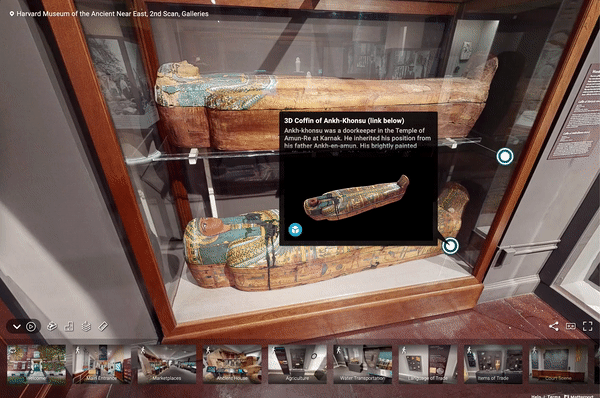
Many museums and heritage sites have been publishing their spaces on Matterport since the beginning of the pandemic, but more research is needed to understand how these tours can engage site visitors is necessary. Instead of simply presenting the virtual tour without interpretive resources, these tours could be important tools for fostering community building around the culture they showcase.
Publishing professional virtual tours on Matterport currently requires hiring a 3d scanning photographer with a special camera of some sort (as of late 2021), but creating virtual tours in a preliminary fashion now works on mobile phones also, so you can test capturing your own spaces with one of their apps: https://matterport.com/3d-capture-applications
You also have to subscribe to a paid plan on Matterport to host more than one virtual tour at a time. You can export all of your content on Matterport for archival purposes and also publish it on Google Street View if you like.
Some example virtual tours on Matterport:
- Tomb of Queen Meresankh III: https://giza.mused.org/en/guided/4/tomb-of-queen-meresankh-iii-g-7530-7540
- Luxor Temple: https://luxortemple.mused.org/en/guided/178/luxor-temple
- National Museum of Beirut: https://my.matterport.com/show/?m=KztT4TgZgXt
- African Cultural Heritage Art Gallery: https://my.matterport.com/show/?m=g9enQCzTgT1
- Boston Old State House: https://my.matterport.com/show/?m=Bjy6VgutnHG
Sketchfab
Odds are that sometime in your research, you’ve come across individual artifacts published on Sketchfab. The platform offers one of the most sophisticated 3d model viewing experiences available, so many industries use it from video games, ecommerce, and architecture to heritage workers looking to showcase their 3d content.
Unlike Matterport, Sketchfab publishes a 3D model only (no hybrid 3D model to 360 photography). As a result, load times are longer, and Sketchfab may not work on as many older mobile phones or in low bandwidth situations.
On Sketchfab, you can create multimedia annotations similar to Matterport and arrange them in an order you like to send visitors on a guided tour of your artifact or space.
You can publish animation of your artifacts on Sketchfab as well if you want to showcase movement in some fashion.
Some example artifacts and sites on Sketchfab:
- “Pilgrims of clouds and water” sculpture
- “Tlaloc”, Aztec Exhibit, National Museum of Anthropology, Mexico City Tehuacan
- Song Dynasty Tomb
- Tomb of Nefertari
Custom 3D and Video Game Engines
Other custom solutions also exist via publishing through 3D and video game engines online. These can beautiful, sophisticated visitor experiences, however they may be difficult and costly to reproduce and only work on some higher-end proprietary technologies. I’ll mention a few highlights, but there are too many custom projects to include.
Google Arts & Culture Experiments: Bagan

GA&C Experiments’s Bagan is one of the most in depth and beautifully designed virtual site tours around. Narrated by Bethany Hughes and featuring 3d data from CyArk, the site tour shows multimedia content annotations in a Matterport-like first-person view virtual tour and then virtual reconstructions of damage after a recent earthquake in a 3d rotate view.

Nefertari: Journey to Eternity
This virtual tour of the famous tomb from the Valley of the Queens showcases the best of photogrammetry capture combined with artificial intelligence to add even more detail for a hyper-realistic visitor experience.
Digital Giza
http://giza.fas.harvard.edu/giza3d/
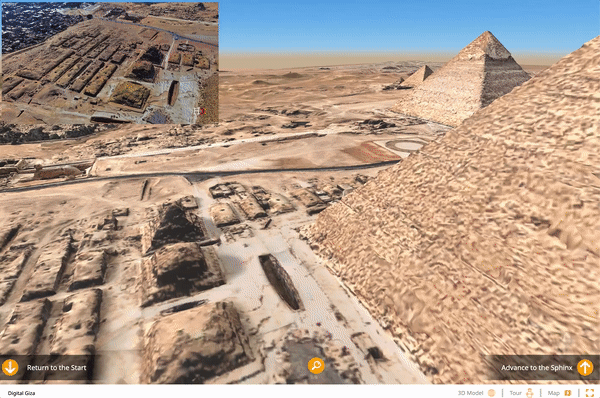
Over a century of archaeological excavations at Giza is incorporated into this 3d exploration of the Giza Plateau. You can turn back the clock to toggle between modern day 3d representation and a full historical reconstruction.
Tomb of Menna on Google Arts & Culture
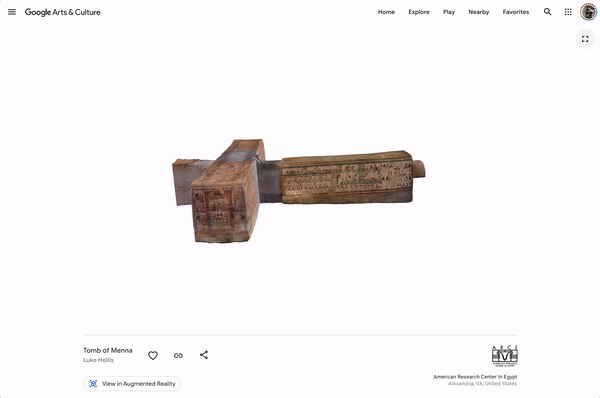
We can take a look at the Tomb of Menna on Google Arts & Culture here as a part of the “Preserving Egypt’s Layered History” exhibition by the American Research Center in Egypt.
The Pyramids of Meroë by Google Arts and Culture
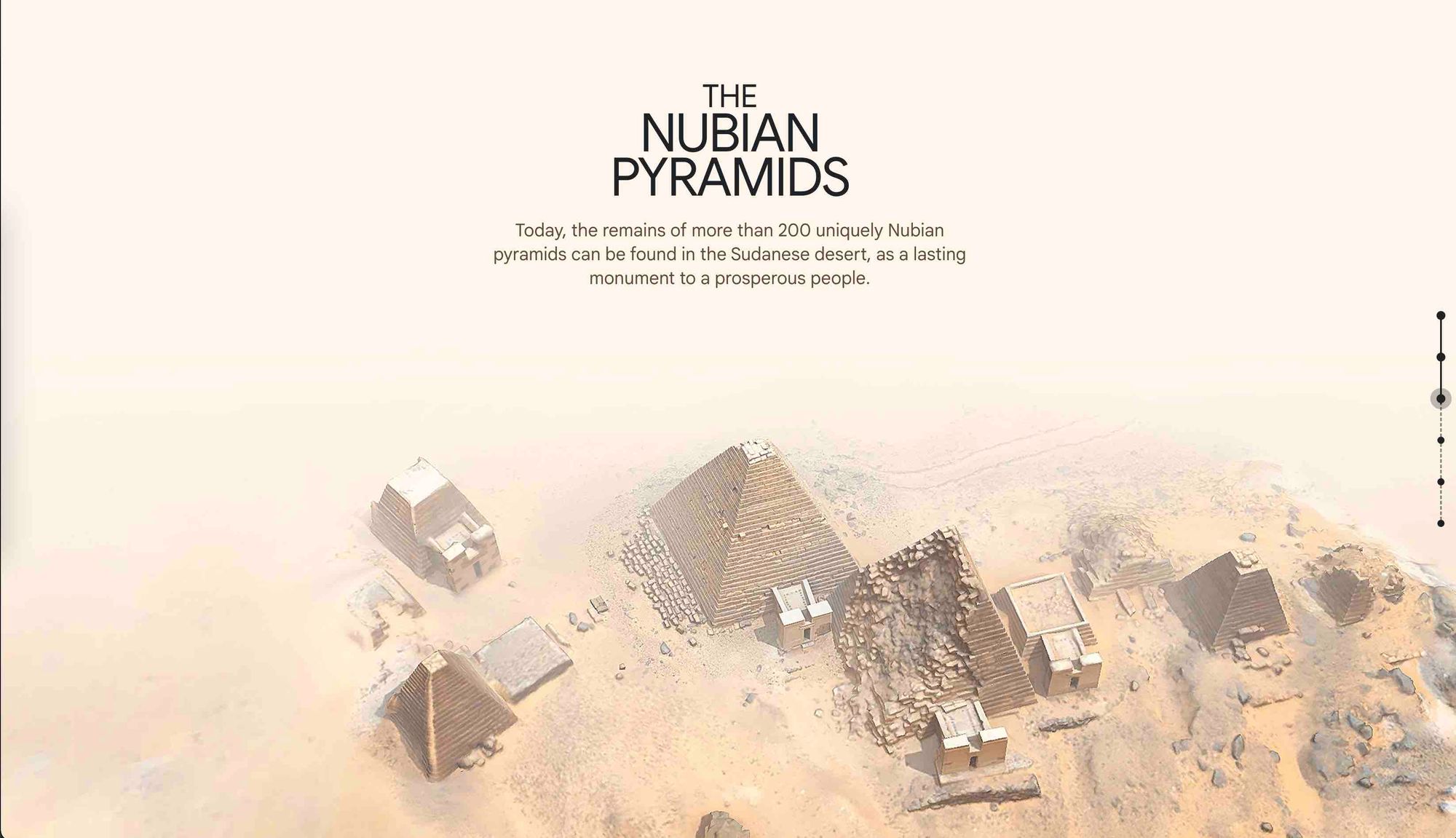
This is a much more simplified version of the GA&C experience available similar to Bagan but with a easy-to-use scrolling interface that describes the story of the pyramids and takes people into and through the tombs within them.
The Getty Online Exhibits and 3D Tours
These highly customized 3d experiences published by the Getty are beautiful walkthroughs of ancient artifacts and spaces to tell the narratives of the historic sites they represent.
Mused
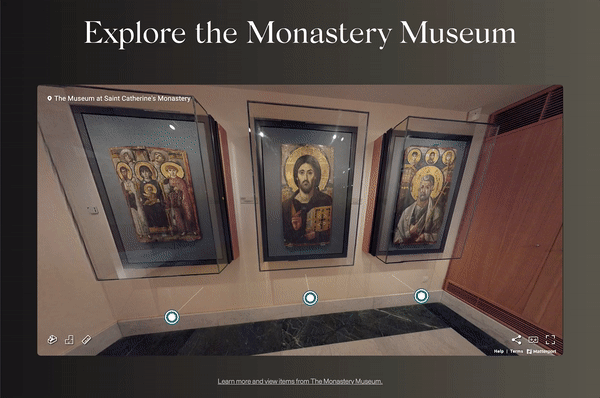
Finally, on the Mused platform, you can feature a virtual tour linked directly to artifacts in your collections for a seamless visitor experience. Visitors can browse a virtual tour and link to an artifact record, survey related items, and jump directly back into the 3d environment. More on how to set all this up for your visitors in future posts.
Example Mused exhibitions that feature virtual tours:
- Digital Giza
- Luxor Temple
- Villa Romana del Casale
- St. Catherine’s Monastery
- Forbes and Clarke Digital Exhibition
That’s all for this post, GLAM-orous humans! Future posts will discuss more about how to make these virtual tours engaging to visitors and explore how to get international visitors involved with local communities. If there are more tours that you’d like featured here or other platforms, please write them in at the comments section or get in touch.
If this article was useful to you or inspiring in any way, please sign up ✨ by entering your email ? at the bottom of this page, and more fascinating winged words composing GLAM-tech blog posts will arrive to your inbox.
1 Comment
Comments are closed.



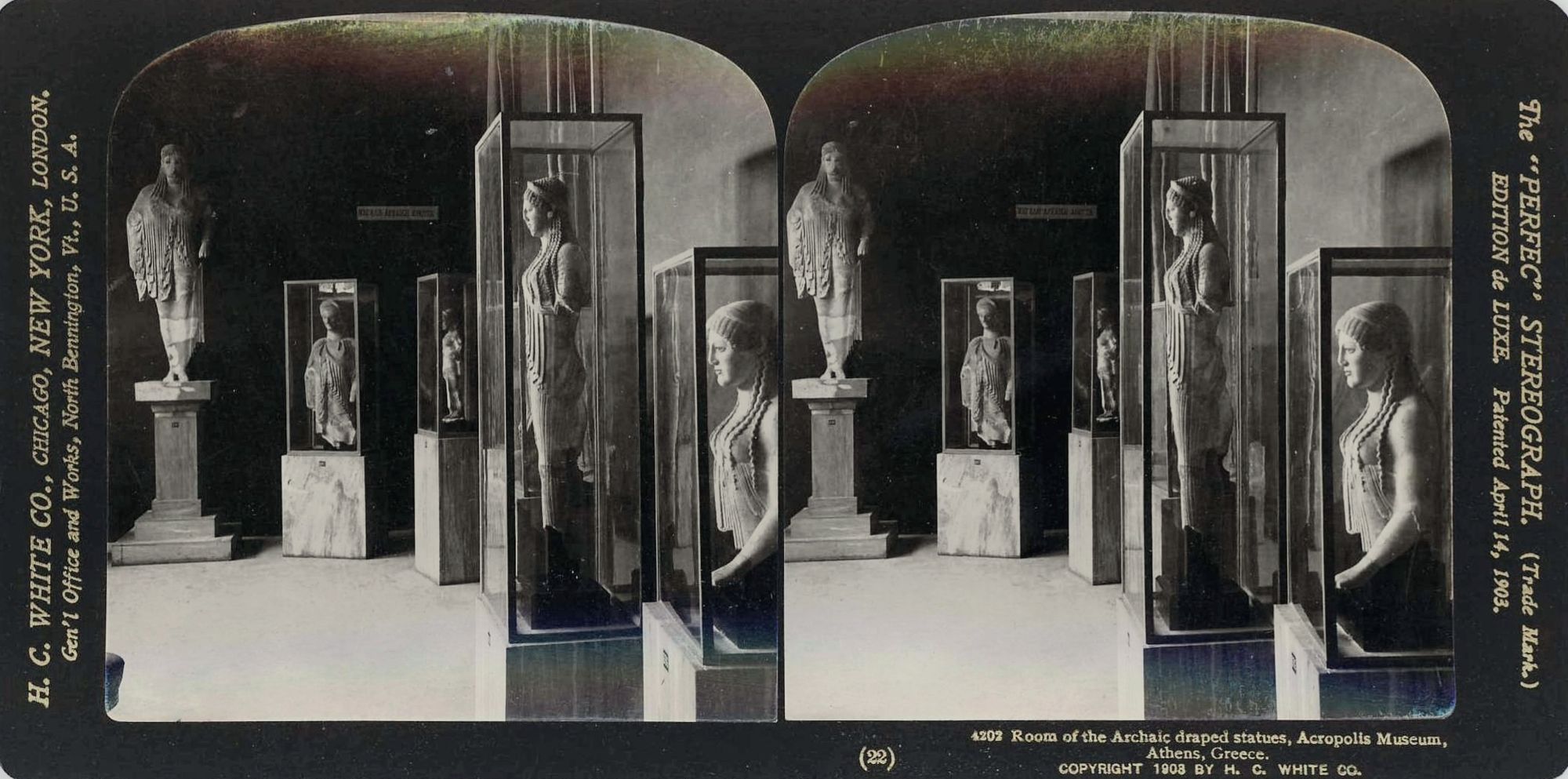
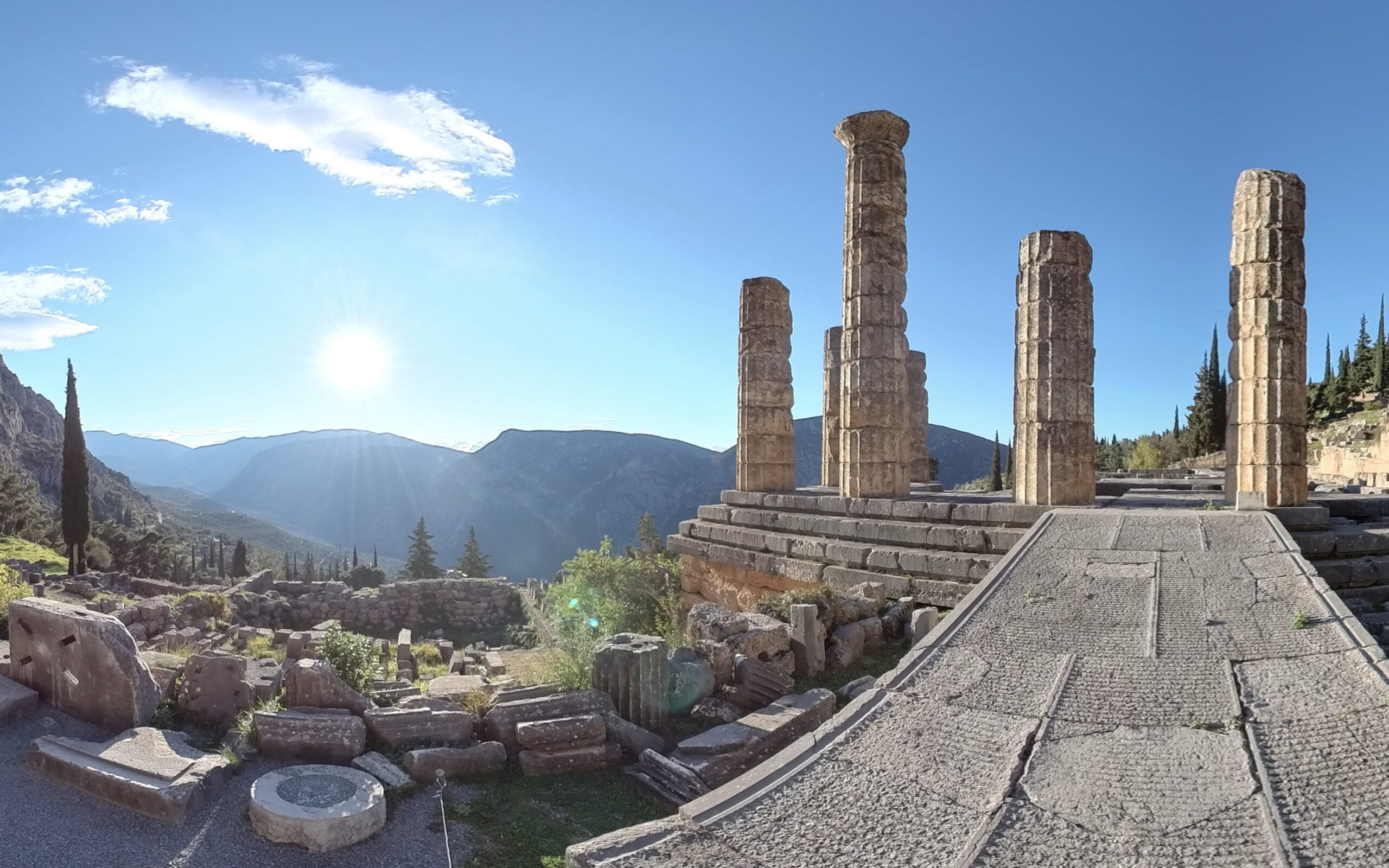

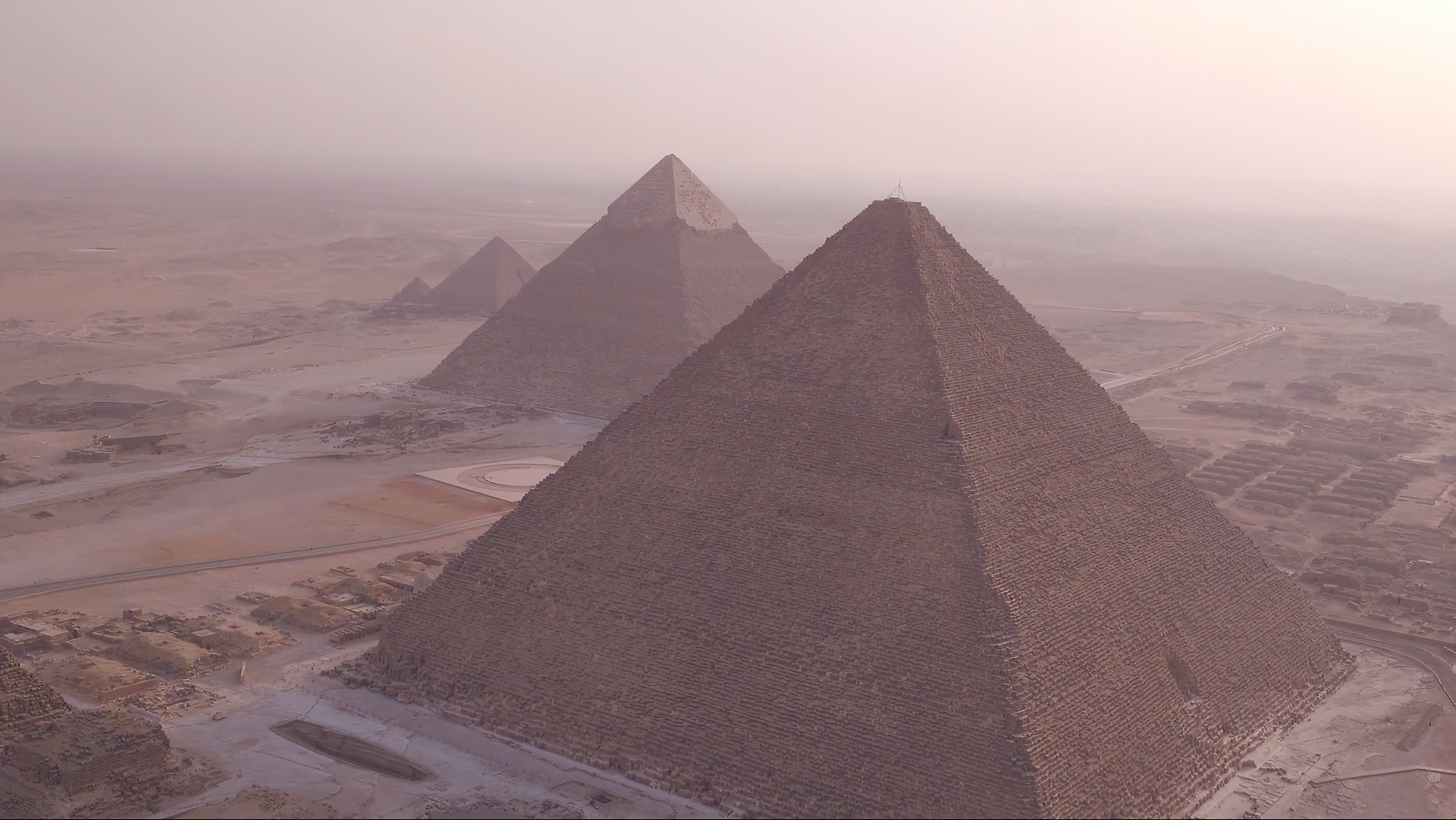

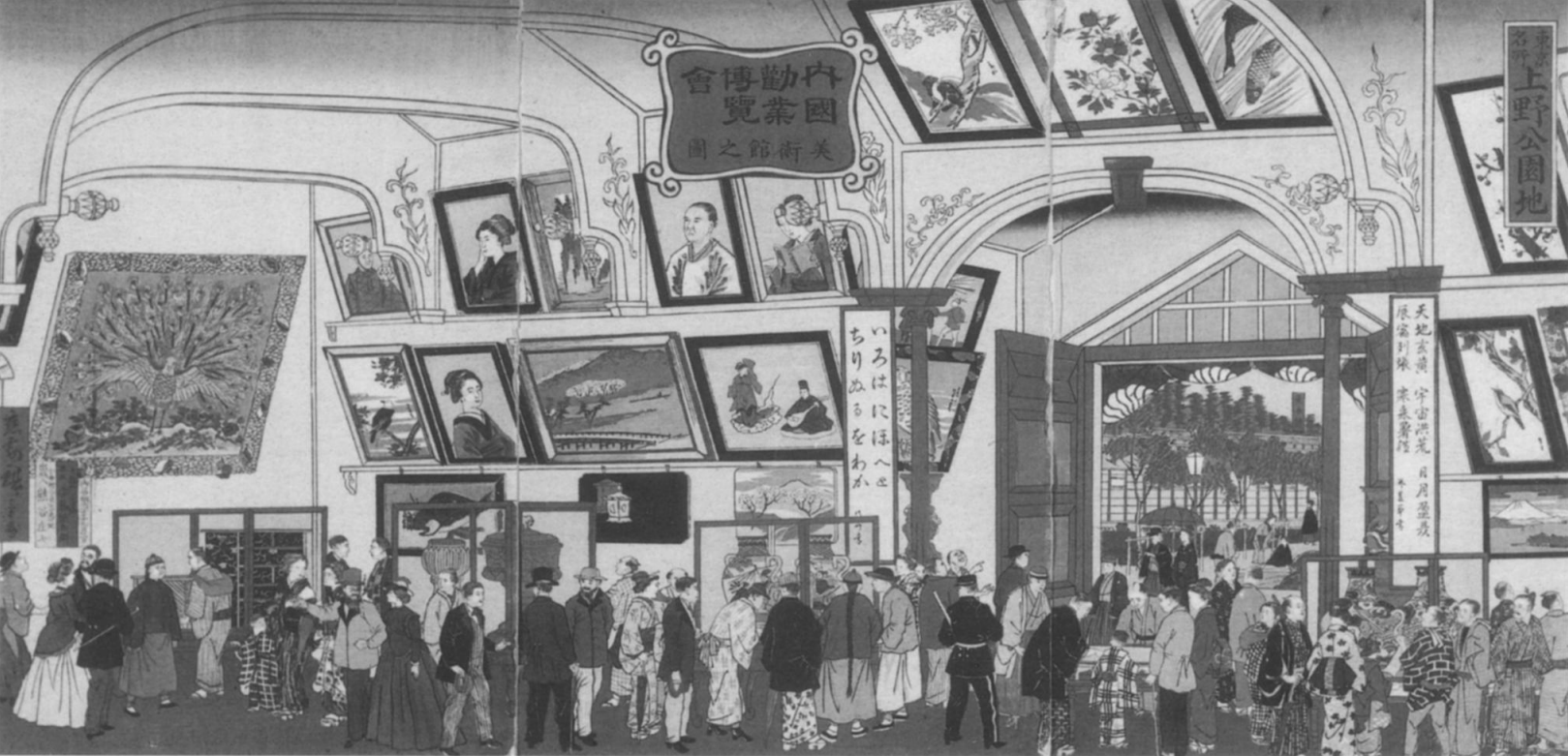
Pingback: How to Make Accessible Virtual Tours for Your Museum or Heritage Site: Comparing 3D Scanning Technologies – Mused